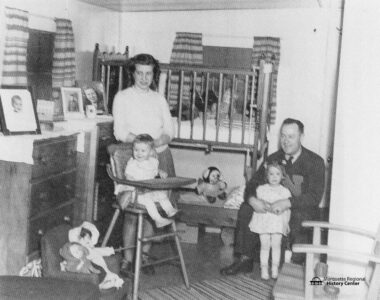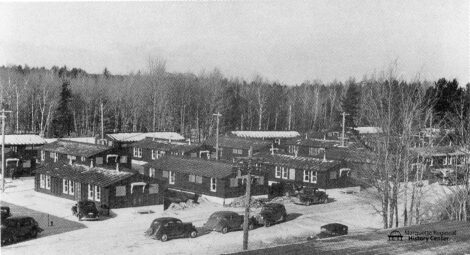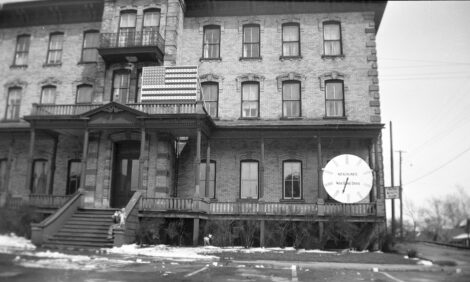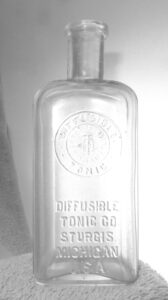NMU’s GIville and Vetville
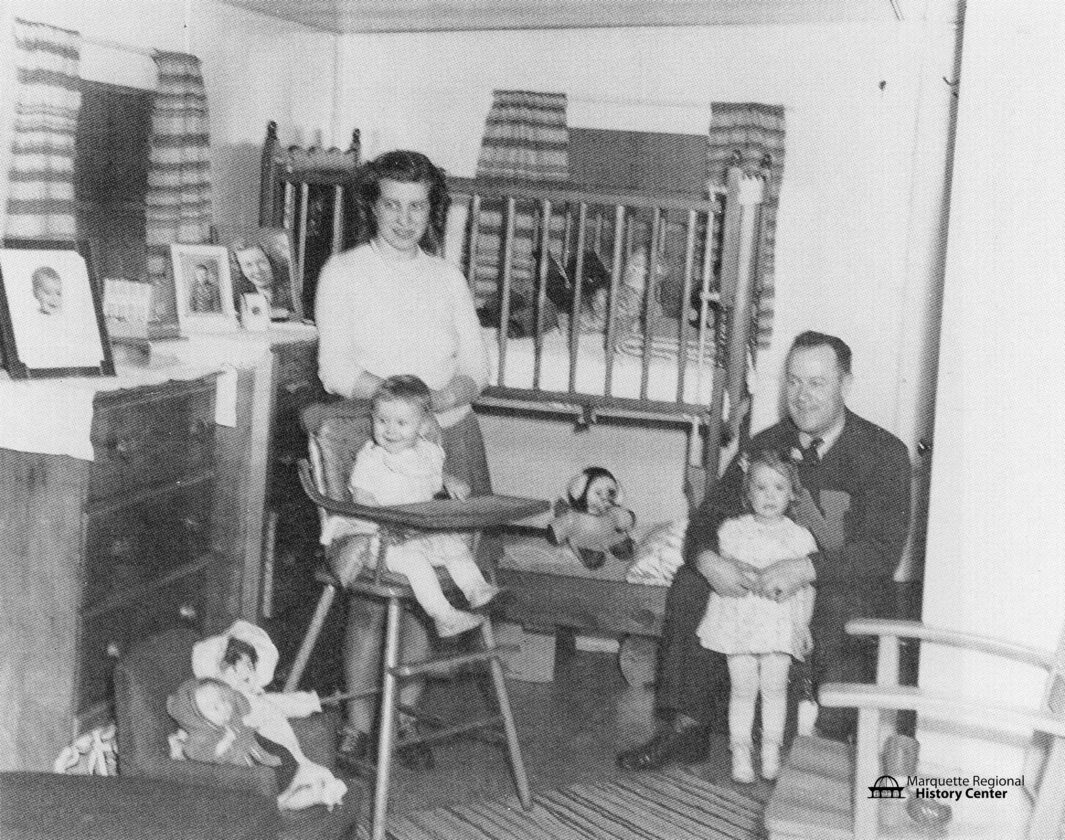
Bertha and Wayne Pangborn with their daughters, Kathleen, 9 months, and Diane, 26 months in their Vetville apartment in 1948. Note the double-decker crib. (Photo courtesy of the Marquette Regional History Center)
MARQUETTE — In honor of Veterans’ Day on Tuesday, we’re looking back at Northern Michigan University’s GIville and Vetville.
On June 22, 1944, shortly after the D-Day invasion, the G.I. Bill was signed into law by President Franklin D. Roosevelt. Officially known as the Servicemen’s Readjustment Act of 1944, the landmark legislation was designed to assist millions of veterans in their transition back to civilian life.
The bill addressed concerns about potential unemployment and economic instability following the war by providing veterans with a range of benefits, housing assistance and unemployment compensation. The educational benefits included stipends covering tuition up to $500 and expenses for veterans attending college or trade schools.
One result of the G.I. Bill’s passage was an immediate need for both single and married student housing. Locally, President Tape of Northern Michigan College of Education (now NMU) began negotiating with the federal government to obtain war-time housing units for use on campus.
The first location, GIville, was located at the corner of Waldo Street and Presque Isle Avenue, where one of the University’s new apartment buildings is currently under construction. Seven duplex housing units that had previously served as war workers’ homes at Willow Run in Detroit, were moved to the site in February 1946. The women did their laundry in special facilities in the basement of the Peter White Science Hall nearby.
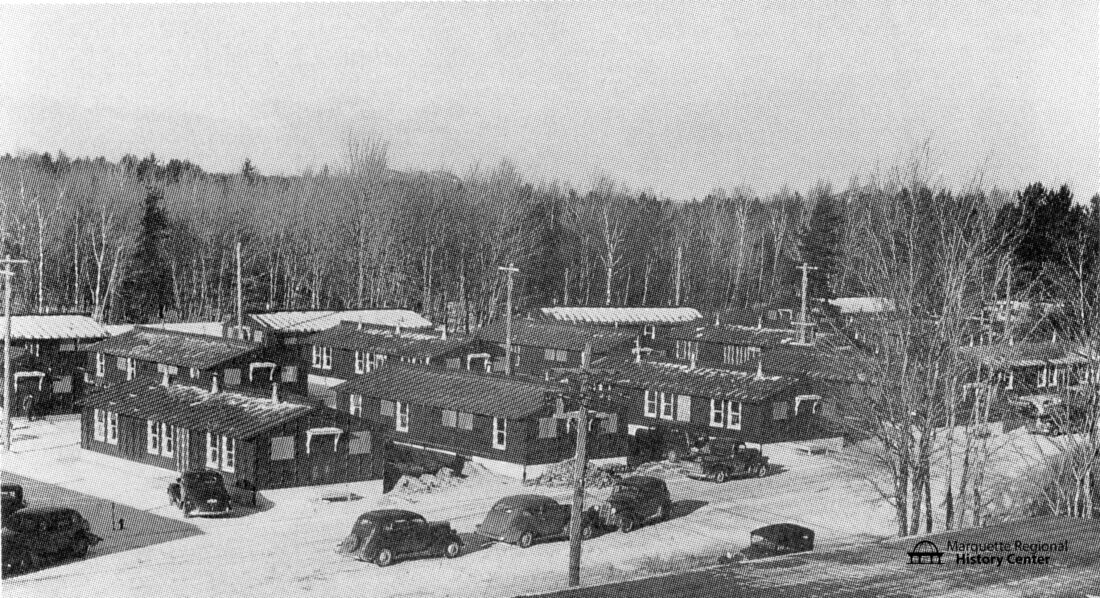
Vetville is seen in 1948. (Photo courtesy of the Marquette Regional History Center)
The 1946 fall term saw 929 registered students, 57% of whom were veterans. But when the demographics were broken down by gender, 83% of the 532 male students were veterans while there were only 3 female veterans among the 297 female students.
Shortly after classes began that year, 17 metal barracks arrived from the Army engineer depot at Marion, Ohio. The buildings were originally designed as tropical Army barracks for use in the Pacific, but in Marquette they were converted into 45 apartments for married veterans and their families.
Each apartment had “a modern bathroom containing an aluminum shower stall, lavatory, standard water closet, and medicine cabinet.” The kitchens contained “a refrigerator, electric cooking range, electric hot water, and a double kitchen sink.” They were erected south of Lee Hall and west of Cohodas on the site of the current Northern Center and its parking lot. This community became known as Vetville.
Despite the modern conveniences found in the new apartments, when residents moved in, they still found “bleak, green metal buildings.” Often the first improvements were hanging curtains and laying linoleum flooring.
Spring 1947 found the villagers struggling with mud, holes, gravel piles, cinder paths and remnants of the moving and construction work still be completed. Cars parked between the buildings during cold weather had left deep muddy ruts. Mothers climbed over gravel piles to hang clothes their children had dirtied sliding down the same piles.
As the summer progressed, the grounds were cleaned, lawns resodded and cement sidewalks laid. Gradually, the construction zone assumed the “appearance of a tidy, well-planned and adequate little housing project…”
The college also erected four temporary men’s dormitories to house 96 single male veterans. Originally wooden Army barracks from Camp McCain, in Grenada, Mississippi, they were re-erected on the school’s old athletic field.
The 150 x 20 foot buildings were divided into two sections, one housing eight men contained four suites, two study rooms and a bath, while the other section was twice that size with eight suites, four study rooms and a double bath for 16 men. The suites had two beds, each provided with three blankets and suitable linen.
In the metal Vetville buildings, prices ranged from $18 per month for a two-room apartment to $23 per month for a two-bedroom apartment, not including utilities. On Waldo Street, where heat, water, and electricity were included, rent was $23 per month. The single men paid $13 per month for their bed in the dormitories.
The residents of Vetville developed their own community, with a veterans’ wives club, the Winovets, organized in 1947. That same year, the home economics department began offering a 15-session course in home and family living to the wives of student veterans. Then, in 1948, the veterans formed their own “Vet-Ville” intermural soft-ball team.
In 1949 some of the wooden barracks for the single men were converted into apartments to provide additional housing for married veterans, although the tenants still had to share bathroom facilities. These were $19 per month and did not include utilities.
The 1950s saw some growing pains, with repeated warnings about speeding vehicles on campus posing a threat to the young children living in Vetville. In 1949, there were 52 children living in Vetville, ranging in age from infants to first and second graders. Thanks to the 16 babies, Vetville’s “official flag” was a plain, white, 20-inch square, cloth diaper, many of which were flown daily on the clotheslines.
The five years following the war saw Vetville fully occupied, but the outbreak of the Korean War in 1950, saw a drop in residents as veterans were either called back into service or graduated. It was at this time in 1951 that the GIville duplexes on Waldo Street, originally intended to only last from 1946-1949, were removed with the completion of work on the Lydia Olson Library.
Following the Korean War, even more veterans were attending Northern under the G.I. Bill, and the school was once again pressed for housing. Vetville was used for married student housing, regardless of military service. In at least one instance, a faculty family with four small children lived in two connected Vetville units. When additional married housing was completed on the north side of campus and with plans for the construction of Spooner Hall underway, Vetville had served its temporary job.
- Bertha and Wayne Pangborn with their daughters, Kathleen, 9 months, and Diane, 26 months in their Vetville apartment in 1948. Note the double-decker crib. (Photo courtesy of the Marquette Regional History Center)
- Vetville is seen in 1948. (Photo courtesy of the Marquette Regional History Center)
In 1957, the buildings were sold to a local developer, who relocated them to Hotel Place in Harvey. The Vetville buildings remain in Harvey and are still rented by NMU students. The site was cleared of foundations and prepared for construction of the Don H. Bottum University Center in May-June 1959.

